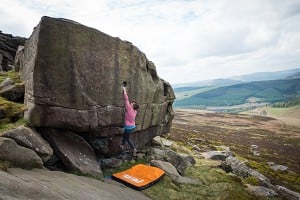
Jules McKim pens a love letter to gritstone and the key routes in his gritstone learning. This is an extract from his book Schooled by Rock: Studies in stone and high places, which was published on 1 October.
Without geography, you're nowhere.
-Unknown
So far, climbing had taken me to Swanage and the Avon Gorge, North Wales and The Lakes, Cornwall, The Cairngorms and The Peak. My personal geography had expanded through looking for places to climb and I wanted to go north again, back to the gritstone. There was just something about it. It had been an easy choice: geology at Sheffield University.
To the Grit and The God.
I'd collected the guidebooks and seen the pictures, way before first contact. The photos in Crags magazine, although black and white, shone with a glorious energy. It just wasn't the same with volcanic or metamorphic rock. The sedimentary stuff was quieter, more of itself, hadn't been spat out of volcanoes, or bent, squashed and folded into strange striations through metamorphic mayhem. Slower and calmer, these drifts of silt, sand and pebbles settled in deltas and riverbeds waiting for millennia. So much easier to relate to, these surface forces: the tides and currents, winds, ice and frosts, as opposed to the unimaginable temperatures and pressures hidden below and out of sight.
The surprise view across the roofs of Hathersage to Stanage Edge: a furrowed brow of stone that glowers south and westwards, four kilometres of rough edges and blocks, all of the most glorious gritstone. My Dad drove me up to my room in Earnshaw Hall on Sheffield University campus, I dumped all my stuff, and we headed straight out to Stanage. Moving here ostensibly to study geology for three years was a geographical decision easily made. It was simply a pilgrimage to this rock that I love.
We flung ourselves into it, Guy, Paul and me. We three met at the first gathering of the Sheffield University Mountaineering Club (with its twisted acronym SCUM) and ended up sharing houses together in our second and third years. Paul was super fit and seemed to go running as much as he went climbing. I loved his enthusiasm, his boldness on the rock, his love of Bob Dylan and the way he led me to climb as well as I could. Guy was doing geology in my year and was more into it than I was. While Paul and I connected on the rock, it was with Guy that I explored ideas and dreams late into the night, intoxicating ourselves to fuel the vibe and to make the music sound even better. Paul excelled on the rock, there was no stopping him, while Guy and I were in the B-team, easily distracted by a pub and a sit down. Despite this, our abilities grew as we got to know the rock and the skills it invited. With rock as the backdrop, we learned about ourselves and each other, our places in the world and our desired paths.
We opted for a diet of pure grit, the limestone cliffs largely ignored, mainly because we liked to be up on the moors, on the higher ground, with views and clouds and sunsets, where the winds blew and the grouse grumbled, but also due to the inexplicable attraction of gritstone as a medium to climb on. Days on Stanage: no ropes, just endless soloing, eating through the classics as they ate into us, nibbling at our fists and palms. Leaving nothing but skin, taking nothing but lessons learned and warm memories of movement. But what we took was so much. These were peak experiences every time we went out. This was our play. And below are some of the games played, and what they taught me.
I love how the routes, these games, their structure, are the same for all climbers who choose to play them. This leads to wonderful connective conversations: It's such a good climb, isn't it? How did you do the crux? Did you get the pocket with your left or right hand? Although each ascent is individual, there's a shared experience too and with the truly special routes you join a select club where the entry requirements are simply scars in the right places, and a knowing wink.
The guidebook entries give the name, length, grade and a brief description for each climb:
Moon Walk. 12m. E4 6a. One of the finest grit experiences. A tricky start gains a flake in the arete. This leads to a break, which needs packing with Friends, before the tasty finishing moves. Well worth attempting as a true ground-up on-sight, since commitment on the final move will be rewarded with success or flight-time.
I was camped with my old friend Nic at North Lees bimbling around and catching up, enjoying drinking the evening away in Hathersage. Although the next day was damp and drizzly, it cleared slightly in the afternoon. We found ourselves at Curbar and I figured I'd have a look at Moon Walk. Nic hadn't climbed much at all but could belay. Still, I wasn't hugely confident in us as a pair. The route looked excellent, following a beautifully sculptured arête, and I was delighted to make good progress over the initial grunty bulge and up the flake crack – it felt about Hard Very Severe and with good gear. Clearly the next section was the crux. Today wasn't going to be the day to do it, but from then on, I was obsessed by this route. It had to be done - and soon - as I constantly felt it was there, unfinished business, evoking similar feelings to an unconsummated love affair.
It was another couple of years before I found myself up there again, with the time and the psyche and the people. I was staying with a friend, Jon, and he was keen too, as were some of his mates. We had a team landing on Moon Walk, one by one blasting up it with such pleasure, all hoping for a low gravity romp and just about getting it.
Up to the crux as before and some cams in the break. I think I messed up the sequence - got my wrong hand in the famous pocket - and was committed to fighting my way out of a bag of blind and limited possibilities over to the right. With a terrible desperation and a rising nausea from the exertion and terror I managed to reach a sloping shelf with my hands, but my feet were now invisible. My arms were pumped beyond use, feeling like lumps of someone else's flesh. Could I hook my elbows onto the shelf? My chin? It was a classic gritstone bellyflop finish, but it worked, just. It finished me off too for the day, but I was more than happy to watch the others have their own experiences. Lessons learned: get on the harder stuff but think it through, avoid rushing the wrong way; look, really look, and plan ahead.
Silent Spring. 24m. E4 5c, 5c. Start in the dirty gully on the left and cross a thin green slab to a stance on the front (belay on a pre-placed rope). Continue right and then down before traversing out to the arete and a fine finish. Some of the many ancient bolts can be clipped or threaded although none should be trusted.
The snow lay all around, deep and crisp and even. Burbage valley in winter is magical, the snow adding to the already otherworldly silence and aural qualities. This huge chunk of stone, The Cioch Block, hangs out into the quarry, like the wide forehead of a sleeping giant; we tiptoed quietly across beneath its eyebrows, hoping it didn't wake. Two pitches, one each for Paul and me. Guy was on the tape deck playing dub reggae classics at high volume, the heavy bass lines echoing around the quarry. Paul opted for the first pitch which pleased me immensely until I saw it was likely worse to go second. A fall at the tricky start would pendulum me across into the void, the rope sawing along the top of the block. But it was all good, though care and precision was required: the short first pitch was soon despatched, and we were both on the belay, half-way along the face.
I had been here before, had failed to commit to the first moves rightwards on pitch 2. Over the following months, I had examined the remembered holds in my mind, their sizes and their positions, and had developed a sequence. Amazingly, it worked first go. Low hold for the right hand down at waist level, right foot strides across, cartwheel roll the left hand across for a finger edge and the next holds all come running. The rest of the pitch was an easy romp in a fabulous position, snow below, Paul to the left holding my ropes, Guy level with me and behind, UB40 all around. The traverse goes all the way to the right edge of the block before moving up lovely rough rock, natural here in contrast to the quarried face below. Great handfuls of rock, just made to be held.
We stopped for a few pints at the Fox House, a delightful end to the day. The beer was terrible, but the mood ebullient. Our hands were so tired they struggled to hold full pint glasses – we needed to drink them quickly. Lessons learned: the mind can find solutions to problems beneath our conscious awareness and I love a winter pub with mates at day's end. Over our pints we picked over the day's moves and shapes, miming cruxes and discussing visualisation. The routes I'd done, the routes I wanted to do filled my mind, with endless repetition and circular thinking. If you can imagine doing a route, does it make it more likely that you'll succeed on it? It certainly seemed so. But there were some that I really didn't want to think about.
Beyond the grades I managed, things quickly get gnarly. Gritstone E5s include a host of horrors that were added to our wish-lists with a terrified resignation. Often completely protectionless and with the ethical imperative to climb them ground up, I lost sleep over such routes as Edge Lane at Millstone and Hairless Heart at Froggatt. I could get up to the crux of Edge Lane quite easily; it was well practised eventually as I'd been up and down it so often. The English 5c crux though I simply couldn't, wouldn't commit to. Falling from there could be fatal, certainly catastrophic. I could vividly imagine it going wrong, the long fall, the crunching and screaming. Moving up on small holds, trusting feet to little edges…a hold could break, a bird could fly into me, I could sneeze for goodness' sake. Would it be worth it? My ego screams: Yes, of course! Go on, if you've done it, you can tell people you've done it, say "Yeah it's not too bad" with a cool and practised nonchalance.
*
It's full of expression, this rock, its many faces both kind and dismissive, sometimes impassive and inscrutable, blank canvases on which we project our own mental states. Feeling strong and cool, it smiles back, leans down to give us a hand up, offering large grippy holds for us to grasp, handshaking us up to the top. On dark days, when it's cold and damp and we have heavier hearts, we see the horror and injury everywhere, leave flesh and blood behind in the cracks, learn of the climbers who have died on these cliffs.
So, I approached with more caution and respect, appreciated the subtleties and nuances, the aspect, and the outlook. Sometimes just looking at the stuff, wordlessly, without thought, admiring its perfection of form as if at a sculpture garden. The beauty of the cracks, the round towers, the crenellations and wind-weathered nubbins on the crest of Cratcliffe Tor. The pockets and pebbles particularly, and the sequences of movement they invited, had us chuckling at their exquisite beauty: a one finger hold on a pebble, crucial for balance, and it's the only pebble on the rock, in just the right place to execute the move.
The wind buffets over the turrets of Burbage North behind us, the heather shuggles, the rocks hum at us breathlessly. Sheep call in the distance, the occasional grouse chuckles and we remark again at how the acoustics of Burbage Valley are otherworldly, how sounds are somehow magnified. It is one of those places that, when alone, you become more and more aware through the day of your own sounds: your breathing, your heartbeat, the squeak of your rock boots, your internal monologue, your muttered self-conscious "Yes!" as you pull over the top on the finishing holds, not wanting to shout out of respect for the surroundings, much like the reverence one shows in a church.
*
Ashley Montagu in her book Touching explains:
Although touch is not itself an emotion, its sensory elements induce those neural, glandular, muscular, and mental changes which in combination we call an emotion. Hence touch is not experienced as a simple physical modality, as sensation, but affectively, as emotion.
How touching. I have to confess I have a deep love for this stone that verges on the carnal; I will find myself rubbing my hands across its surfaces when walking past boulders, fingers dipping into pockets and cracks, tweaking its pebbles, imagining the moves it suggests with its dark eyes and sparkling crystals. Revisiting again after time away, I pass a swell of gritstone through a gap between two boulders, my left hand sliding along and around as if across the hip of a lover; I'm steadied, grounded, home.
*
An ascent of Elegy at the Roaches is my favourite gritstone moment. So far. Another of those special memories, something extraordinary verging on the spiritual, a little ball of delight I can roll around in my mind and reappreciate again and again. The Roaches lower tier is another one of those places, with the bonus of the pine trees whispering in the wind. Elemental magic is evident all around. Elegy had been on my to-do list for ages, I'd just never got round to it. But here was now and we were here. The day was settled, temperature and conditions were right, my body and head felt OK, not an absence of excuses as such, but rather, the positively spun: Everything is right, I've got to do it now.
Elegy. 16m. E2 5c. Perhaps the best slab route in Western Grit! Climb the awkward overhanging corner to the base of the upper crack and large cams. Balance left to the tantalising flake and if you are completely baffled, try a bit of lateral thinking. Follow the creaky flake to its end (slightly dubious runners) then weave a way up the final bald slab connecting a set of small blisters by brilliantly intense climbing.
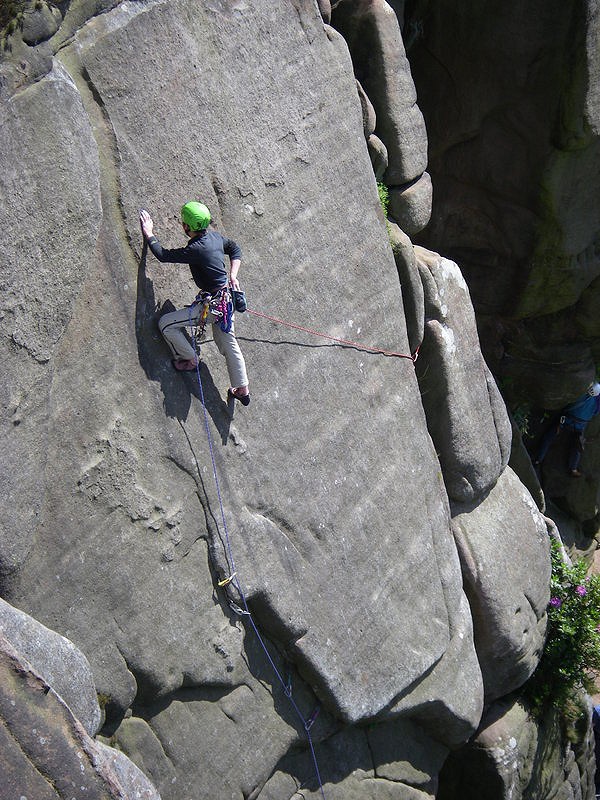
This is a great guidebook description. It's all that and more of course, as these movement experiences are beyond words. During the process of climbing it, I felt out of my body several times: an oddly delicious jolt of Shit, I'm here, doing this! bringing me back to the here and now. The step left was weird and took me a while to work out. A counterintuitive moment, a case of committing to a set of moves that feels like they won't work when in fact they do. Going counter-intuitive flips your executive functioning on its head. You're falling, but you aren't, and the flake comes into reach. All is sunny for a while: chunky hand holds, good foot holds, solid protection. Stand still and look around: the beauty of the edge, the flake of Valkyrie, the classic VS on the tower to the left, the castellated turrets at the top of the cliff, the pines swaying and shushing, other groups absorbed in their own dramas.
And then, of course, having to keep going. The route finishes at the top so you can't stay here. More moments that force you to come out of your mind: moving up and away from the protection onto the uncertain slab. What are these moves? Where are the holds? Committing to grit smears once again, stepping up high onto them hoping for a good hold to come within reach. It doesn't: there aren't any, you just need to keep going. Monkey mind chatters away, bashing his cymbals together. You have to keep breathing deep to keep the dark shark of panic well below the surface, to stop it from rising up and tearing your legs off. Keep going, the gear getting further and further away. The final break is almost within reach, then it is within reach but it's dirty and gritty. Thank God you didn't lunge for it. You can't assume anything up here. Keeping in control, even at the end…brushing the grit dust away, cleaning the holds, the gear so far below. Up and over, pulling big chunks, greeting the horizontal, the crag once again offering friendly handshakes of congratulations, welcoming and yet instantly dismissive. Hope you can come again, but I won't notice if you don't.
It's a mindful state this, and not unique to climbing or climbing on gritstone. However, grit, with its concentrated purity seems to amplify it. Meditation with a gun at your temple. Keep the unhelpful thoughts at bay or else! After Elegy I felt tuned in, in my body, with a quieter mind for days. Colours were brighter, my smile more content. I was motivated to meditate and eat well. Mindfulness and bodyfulness; a feeling of positivity ran through my veins. The rock can do this to you. It's weird and wonderful and beyond words, and I love it so much. Thank you, gritstone, I'll happily carry the scars on the backs of my hands to remember you by. The lessons learned remain, though annual refresher training is needed. Squeak your boots and step on.
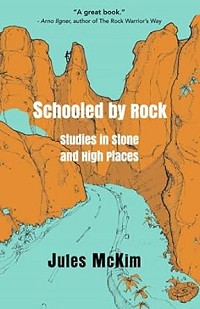
- ARTICLE: The Drive to Climb 2 Dec, 2021
- ARTICLE: From Battersea to Barcud and Beyond 17 Sep, 2021
- ARTICLE: We've Got History 13 May, 2021
- ARTICLE: The Lockdown Lowdown 4 Feb, 2021

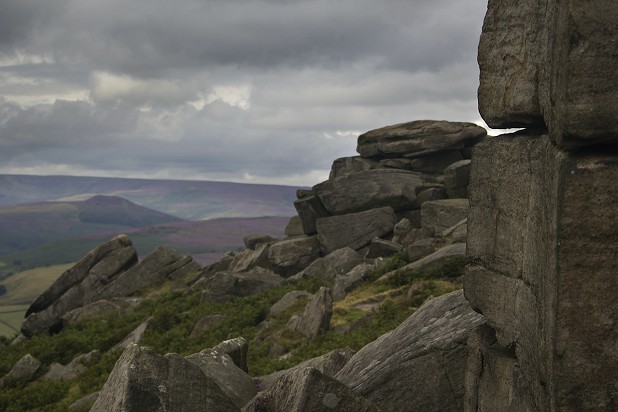
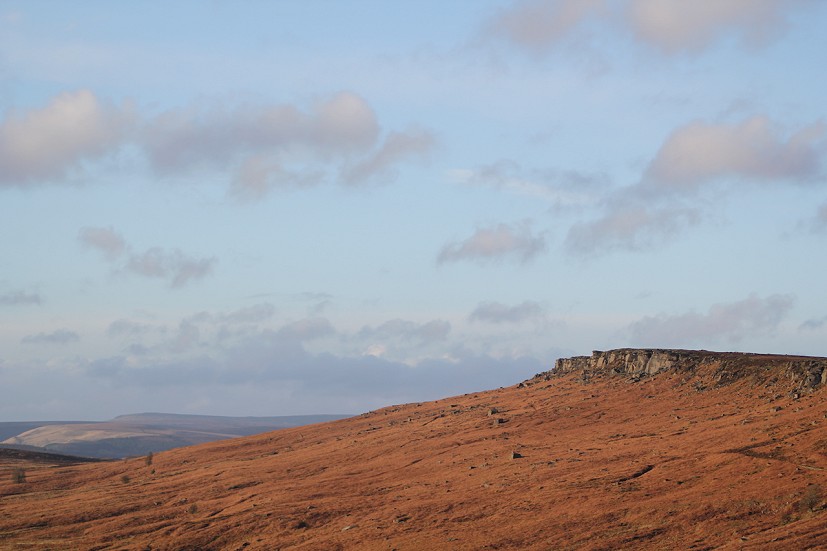
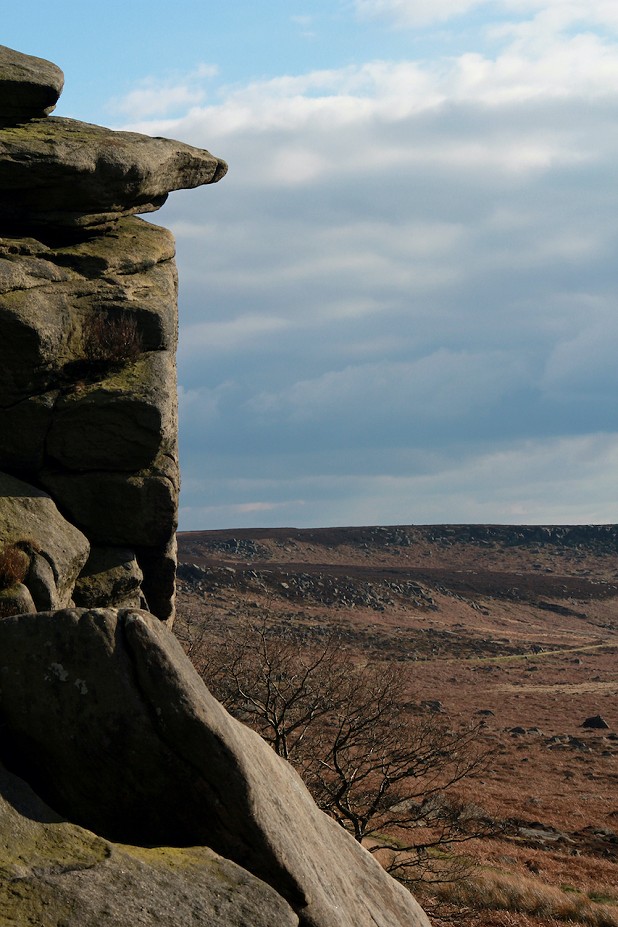
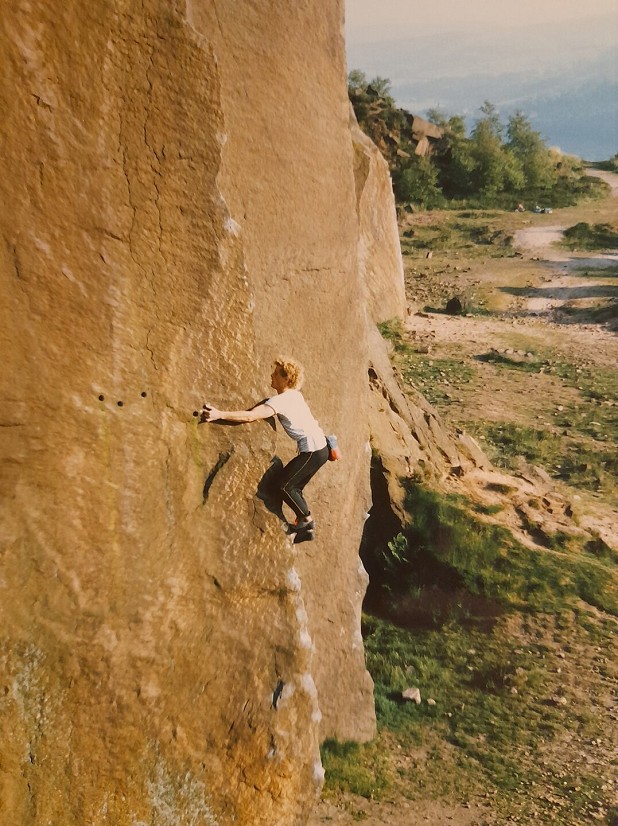
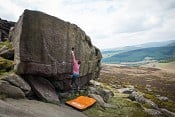
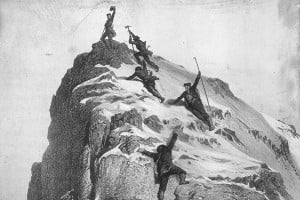
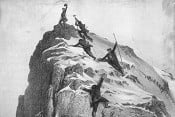

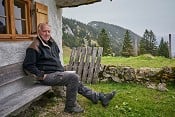






Comments
Marvelous, thank you.
Si.
My word, why have I got two "Dislikes" for that?
Just illiterate disagreers, no big deal ;)
This writing gets me and I get it. It’s gorgeous.
"Without geography, you're nowhere." ?!
You're always somewhere!